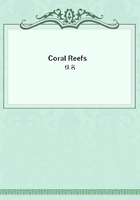
第3章
I well recollect a remarkable conversation I had with Darwin, shortly after the death of Lyell. With characteristic modesty, he told me that he never fully realised the importance of his theory of coral-reefs till he had an opportunity of discussing it with Lyell, shortly after the return of the "Beagle". Lyell, on receiving from the lips of its author a sketch of the new theory, was so overcome with delight that he danced about and threw himself into the wildest contortions, as was his manner when excessively pleased. He wrote shortly afterwards to Darwin as follows:--"I could think of nothing for days after your lesson on coral-reefs, but of the tops of submerged continents. It is all true, but do not flatter yourself that you will be believed till you are growing bald like me, with hard work and vexation at the incredulity of the world." On May 24th, 1837, Lyell wrote to Sir John Herschel as follows:--"I am very full of Darwin's new theory of coral-islands, and have urged Whewell to make him read it at our next meeting. I must give up my volcanic crater forever, though it cost me a pang at first, for it accounted for so much." Dr. Whewell was president of the Geological Society at the time, and on May 31st, 1837, Darwin read a paper entitled "On Certain Areas of Elevation and Subsidence in the Pacific and Indian oceans, as deduced from the Study of Coral Formations," an abstract of which appeared in the second volume of the Society's proceedings.
It was about this time that Darwin, having settled himself in lodgings at Great Marlborough Street, commenced the writing of his book on "Coral-Reefs."
Many delays from ill-health and the interruption of other work, caused the progress to be slow, and his journal speaks of "recommencing" the subject in February 1839, shortly after his marriage, and again in October of the same year. In July 1841, he states that he began once more "after more than thirteen month's interval," and the last proof-sheet of the book was not corrected till May 6th, 1842. Darwin writes in his autobiography, "This book, though a small one, cost me twenty months of hard work, as I had to read every work on the islands of the Pacific, and to consult many charts." The task of elaborating and writing out his books was, with Darwin, always a very slow and laborious one; but it is clear that in accomplishing the work now under consideration, there was a long and constant struggle with the lethargy and weakness resulting from the sad condition of his health at that time.
Lyell's anticipation that the theory of coral-reefs would be slow in meeting with general acceptance was certainly not justified by the actual facts. On the contrary the new book was at once received with general assent among both geologists and zoologists, and even attracted a considerable amount of attention from the general public.
It was not long before the coral-reef theory of Darwin found an able exponent and sturdy champion in the person of the great American naturalist, Professor James D. Dana. Two years after the return of the "Beagle" to England, the ships of the United States Exploring Expedition set sail upon their four years' cruise, under the command of Captain Wilkes, and Dana was a member of the scientific staff. When, in 1839, the expedition arrived at Sydney, a newspaper paragraph was found which gave the American naturalist the first intimation of Darwin's new theory of the origin of atolls and barrier-reefs. Writing in 1872, Dana describes the effect produced on his mind by reading this passage:--"The paragraph threw a flood of light over the subject, and called forth feelings of peculiar satisfaction, and of gratefulness to Mr. Darwin, which still come up afresh whenever the subject of coral islands is mentioned. The Gambier Islands in the Paumotus, which gave him the key to the theory, I had not seen; but on reaching the Feejees, six months later, in 1840, I found there similar facts on a still grander scale and of a more diversified character, so that I was afterward enabled to speak of his theory as established with more positiveness than he himself, in his philosophic caution, had been ready to adopt. His work on coral-reefs appeared in 1842, when my report on the subject was already in manuscript. It showed that the conclusions on other points, which we had independently reached, were for the most part the same. The principal points of difference relate to the reason for the absence of corals from some coasts, and the evidence therefrom as to changes of level, and the distribution of the oceanic regions of elevation and subsidence--topics which a wide range of travel over the Pacific brought directly and constantly to my attention."
Among the Reports of the United States Exploring Expedition, two important works from the pen of Professor Dana made their appearance;--one on "Zoophytes," which treats at length on "Corals and Coral-Animals," and the other on "Coral-Reefs and Islands." In 1872, Dana prepared a work of a more popular character in which some of the chief results of his studies are described; it bore the title of "Corals and Coral-Islands." Of this work, new and enlarged editions appeared in 1874 and 1890 in America, while two editions were published in this country in 1872 and 1875. In all these works their author, while maintaining an independent judgment on certain matters of detail, warmly defends the views of Darwin on all points essential to the theory.
Another able exponent and illustrator of the theory of coral-reefs was found in Professor J.B. Jukes, who accompanied H.M.S. "Fly", as naturalist, during the survey of the Great Barrier-Reef--in the years 1842 to 1846.